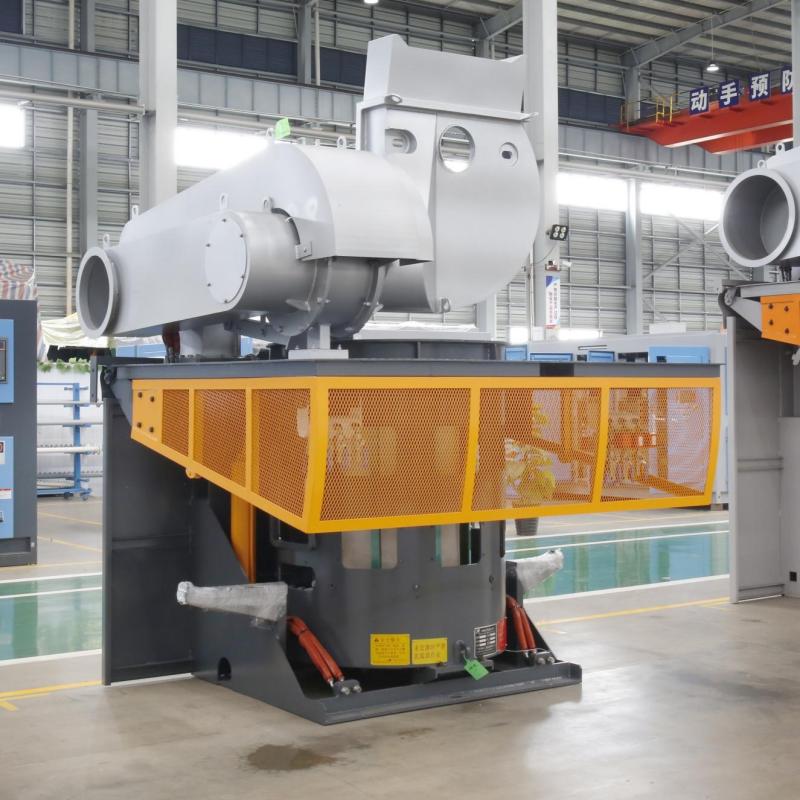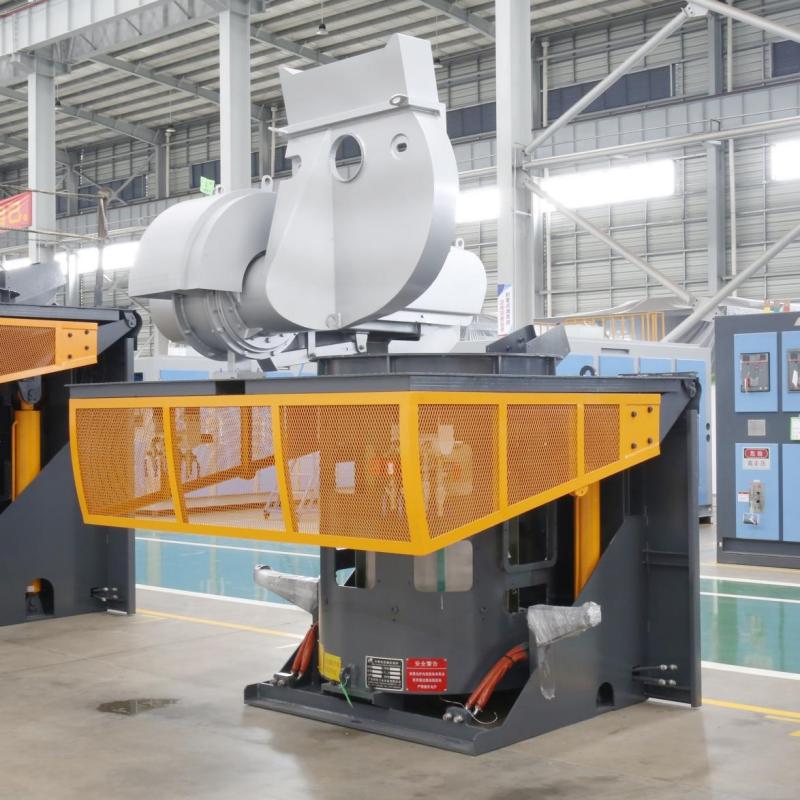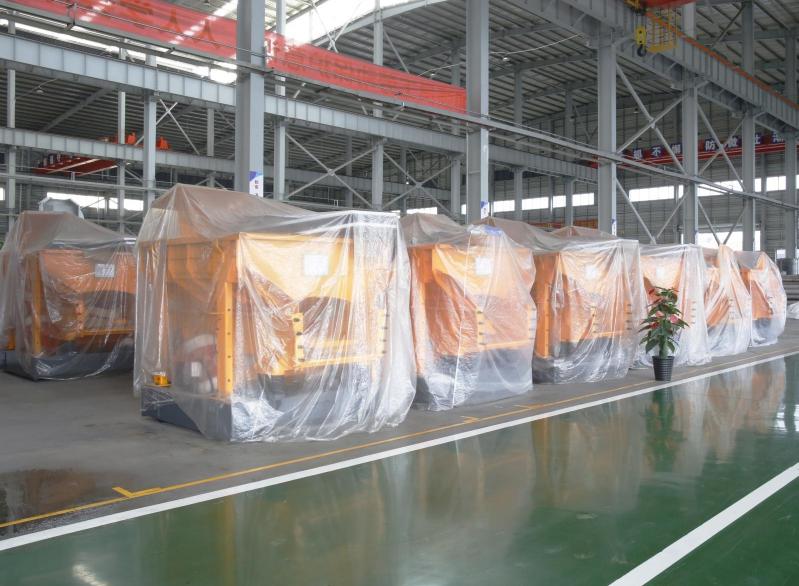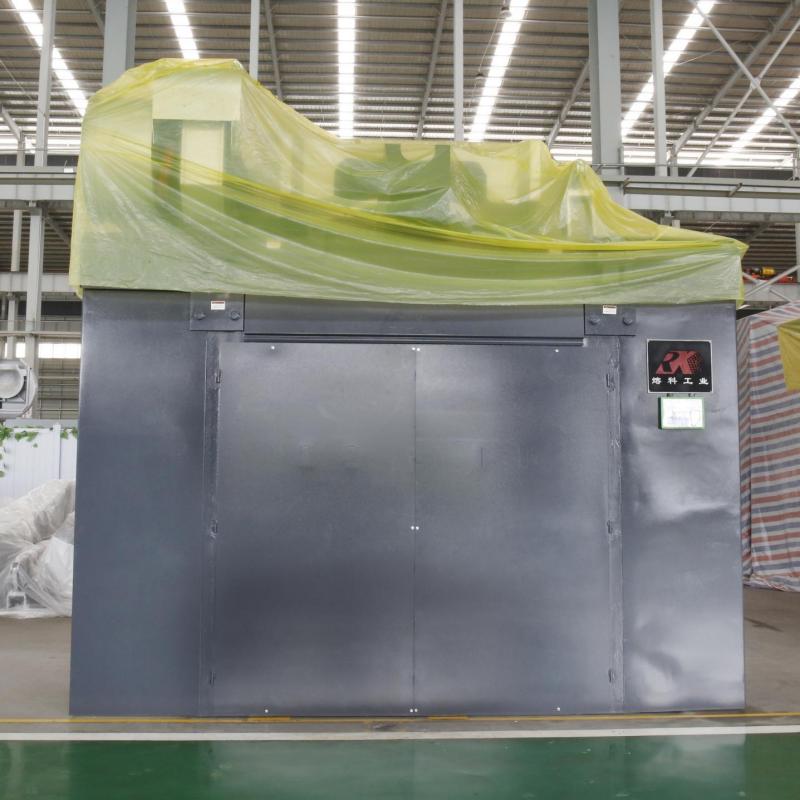How Does an Industrial Furnace Work in Steel Making?
Steel production is a complex and highly technical process, and a key part of that process is the use of industrial furnaces. One common question from new industry professionals and curious engineers is: how does an industrial furnace work in steel making? In this article, we’ll explore how industrial furnaces – particularly intermediate frequency coreless induction furnaces – function, and why Rongke, as a manufacturer, is a trusted name in the field.

What Is an Intermediate Frequency Coreless Induction Furnace?
Intermediate frequency coreless induction furnaces are high-efficiency melting devices used widely in steel and metal casting industries. These furnaces use electromagnetic induction to heat and melt metals without physical contact. At Rongke, we design our induction furnaces with a deep focus on safety, energy efficiency, and performance. Our products are built with strict quality standards to support long-term, stable operations in harsh industrial environments.
How Does an Industrial Furnace Work?
To understand how an industrial furnace operates in steelmaking, it’s essential to look at the core heating method behind it – induction heating.
Ø The Induction Heating Process
Industrial induction furnaces use electromagnetic fields to generate heat inside the metal, rather than relying on combustion.
Here’s how it works:
1) An alternating current (AC) flows through a tightly wound copper coil.
2) This creates a rapidly changing magnetic field around the coil.
3) When a metal charge – such as scrap steel or pig iron – is placed in the crucible inside this field, eddy currents are induced within the metal.
4) These currents cause internal resistance, which generates intense heat from within, melting the metal quickly and uniformly.
This process is fast, clean, and highly efficient. Unlike traditional fuel-based furnaces, no direct flame or physical contact is needed. As a result, induction furnaces produce fewer emissions, improve workplace safety, and reduce energy consumption.
Ø Why It Matters in Steelmaking
Induction furnaces provide precise temperature control, allowing steelmakers to produce high-quality molten steel with fewer impurities and less waste. They are also ideal for recycling scrap steel, making them both cost-effective and environmentally friendly.
Today, more steel plants are turning to induction heating for its speed, consistency, and sustainability. It’s a smart choice for modern, eco-conscious steel production.
Key Components and Functions
Understanding the main parts helps explain how does an industrial furnace work more clearly.
Ø The Induction Coil
•Made with TU1-grade oxygen-free copper from Chinalco Luoyang.
•Constructed using cold extrusion for maximum strength and minimal energy loss.
•Rongke uses a double-coil technology, improving energy efficiency and stability.
Ø Magnet Yoke Technology
•Built with high-quality cold rolling directional silicon steel sheets.
•Covers over 70% of the coil, helping concentrate the magnetic field.
•Water-cooled on both sides to balance heat and extend lifespan.
•Combines support and cooling with zero maintenance.

Ø Furnace Shell
•Fully enclosed design minimizes dust intrusion and electromagnetic interference.
•Reduces noise by 30% compared to similar products.
•Provides secondary shielding, cutting magnetic radiation to just 10% of national standards.
Advanced Safety Features
At Rongke, safety is embedded into every level of design and manufacturing. Understanding how does an industrial furnace work isn’t complete without recognizing the potential risks associated with high-temperature molten metal. That’s why we’ve developed the IDE Furnace Leakage Alarm System, which is fully certified under the EU CE safety standard. This intelligent, all-around protection system is built to detect problems before they become dangerous, ensuring both personnel and equipment remain safe.
Ø Leakage Detection System
•Our system continuously monitors current and voltage levels within the furnace.
•If molten iron begins to seep through the furnace lining and comes into contact with the detection electrode, an immediate alarm is triggered.
•Should the leakage reach the induction coil itself, the voltage detection system activates a high-level warning and identifies the exact breach location.
Ø Grounding Alarm Detection
•When molten iron approaches within 2 cm of the coil, the system senses abnormal current to the ground.
•It also checks the conductivity of the coolant; if it exceeds safe thresholds, an automatic warning is issued.
•These two layers of detection work together to activate real-time alerts, giving operators time to take prompt action.
These dual-layer systems protect against internal damage, fire hazards, and costly downtime – making our furnace safer, smarter, and more reliable under extreme conditions.
Cooling and Dust Control Systems
A key part of how does an industrial furnace work involves not just melting metal, but managing the heat and environmental safety around it. Efficient cooling and dust control directly affect furnace performance, operator safety, and maintenance costs.
Ø Closed-Loop Cooling System
•Our furnaces use a fully enclosed distilled water circulation system, preventing any contamination by dust or external particles.
•Water temperature and pressure are monitored in real time, maintaining optimal flow and preventing overheating.
•All pipelines are made from carbon-free rubber by Germany’s Continental brand, ensuring exceptional durability and high-temperature resistance.
•In case of overheating or cooling failure, the system is directly linked to the furnace’s leakage alarm, ensuring synchronized protection.
Ø 360° Dust Hood System
•Fitted with double hydraulic rods, the dust hood moves smoothly and remains stable during operation.
•Its multi-directional opening and closing design allows it to efficiently capture fumes from every angle.
•Powerful suction helps maintain a cleaner workspace, protects the induction coil from dust buildup, and minimizes operator exposure to harmful particles.
Together, these systems not only support furnace efficiency but also contribute to a cleaner, safer, and more sustainable steelmaking environment.

Why Choose Rongke?
As a professional industrial furnace manufacturer, we at Rongke take pride in our dedication to quality, innovation, and customer satisfaction.
Ø Our Strengths
•Industry-leading processing and manufacturing technology.
•Strict quality control from design to final inspection.
•Use of premium materials for superior performance and longevity.
•Fully integrated safety and efficiency systems.
Our intermediate frequency coreless induction furnaces have been proven to lower noise, reduce magnetic radiation, and provide stable, energy-efficient operation in steel foundries around the world.
Final Thoughts
When people ask, how does an industrial furnace work in steel making, the answer involves a combination of physics, engineering, and smart design. From induction heating to intelligent safety alarms and efficient cooling, each part of the system plays a role in safe and efficient steel production. At Rongke, we understand these systems deeply because we build them. If you’re looking for high-quality industrial furnaces with cutting-edge technology and reliable support, we’re here to help. Feel free to contact us today to learn more about how our products can improve your steelmaking operation.





